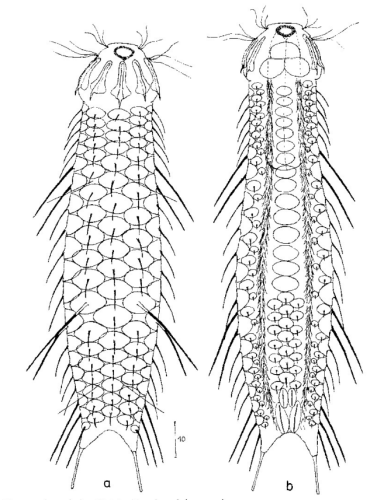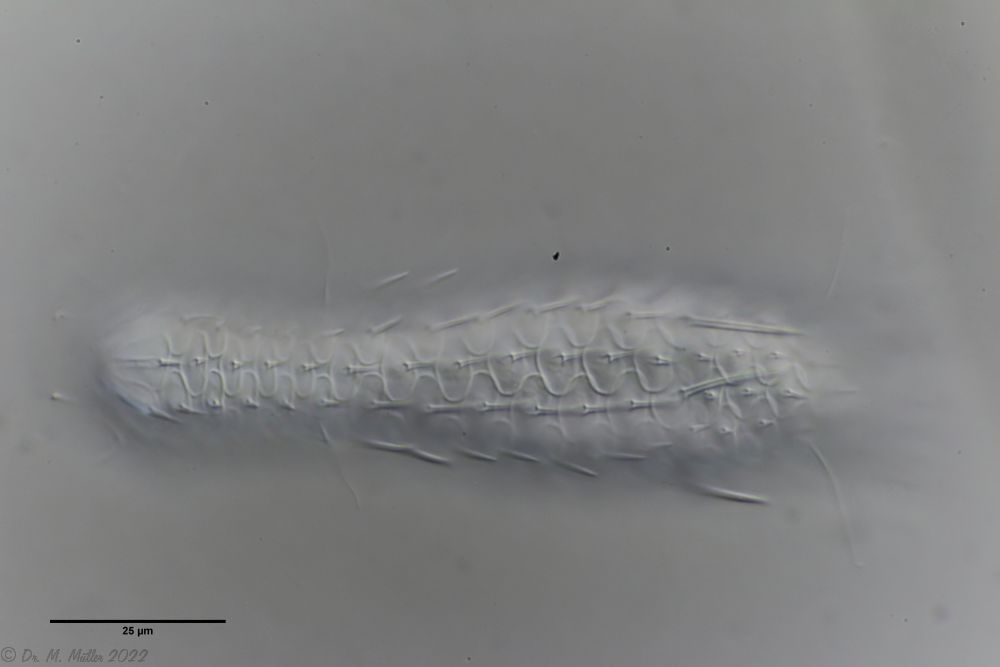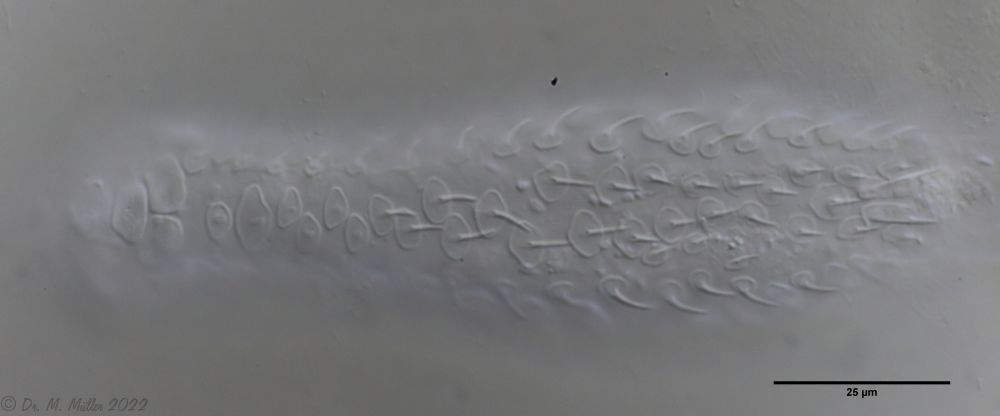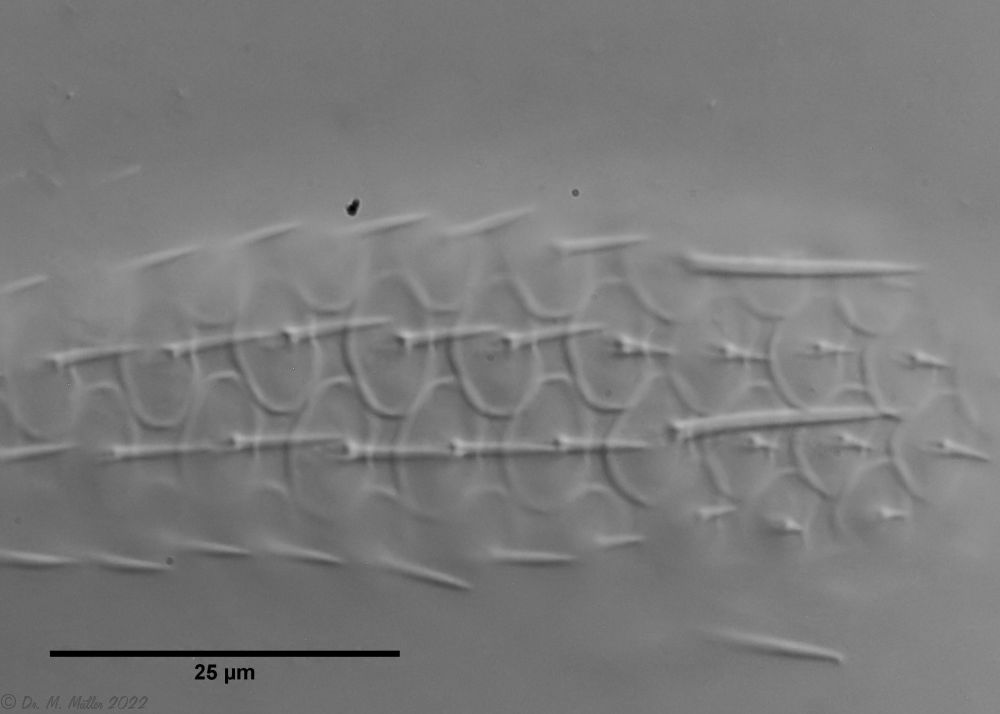Chaetonotus (P. ) acanthocephalus

100 µm - 148 µm
Width:
28 µm - 30 µm
Width of the head ( five-lobed ):
µm
Length of the furca:
16 µm - 20 µm
Adhessive tubes:
75% of furca
Pharyx ( cylindrical ):
37 µm - 40 µm
Diameter of the mouth ( around ):
6.5 - 8 µm
Dorsal scales:
5 rows of 15-18 transverse oval scales (5 x 10 µm) each, not touching; on head dorsally and laterally 5-7 characteristic spiny scales; small spines 6-7 µm; groups of large spines 8-22 µm.
Ventral scales:
Ventral intermediate field on head 3 touching plates; otherwise elliptical plates; in gut region sometimes 3 deer of smaller elliptical plates.
Oecology:
Bog waters, rare, very variable
Particularities:
very variable with respect to spine size - possibly a number of subspecies
A very rare and strange ventral hardy is the nearly rotund Chaetonotus (P.) acanthocephalus with its irregular spination and large, round scales:
 Ch. acanthocephalus: focus on the dorsal scale
Ch. acanthocephalus: focus on the dorsal scale
Ventrally, the animal bears large cuticular plates on the head that change to round, short-spined scales toward the posterior end:
 Ch. acanthocephalus: ventral
Ch. acanthocephalus: ventral
If the animal is macerated with glacial acetic acid, the scale shape typical for the subgenus Primochaetus becomes particularly clear:
 Ch. acanthocephalus: Macerated
Ch. acanthocephalus: Macerated